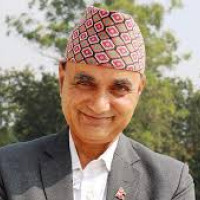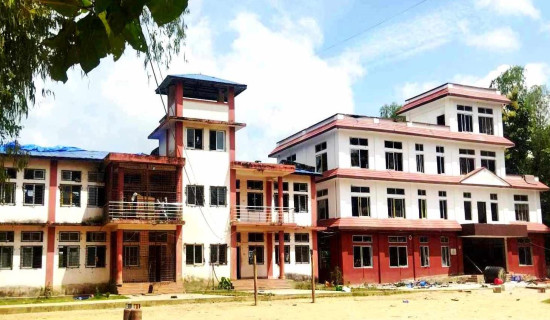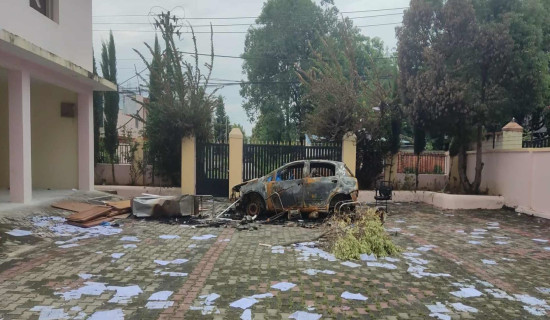- Monday, 15 September 2025
What ails provincial politics?
By Rammani Dahal,Makawanpur, Aug. 17: It has been ten years since Nepal adopted federalism with the promulgation of the Constitution of Nepal 2015, which envisioned a stable political environment and equitable development across all levels of government. However, the experience of the past decade has proven otherwise.
While federalism was introduced to decentralise power and ensure balanced growth across the country, the provinces, intended to be semi-autonomous engines of development, have instead become arenas of perennial political instability. The formation and dissolution of governments, internal power struggles in political parties, and overdependence on the federal government have severely undermined the very spirit of the federal model.
Since the implementation of the new constitution, Nepal has held two periodic elections under the federal structure. Only the first Madhes provincial government completed its full five-year term. All other provincial governments failed to do so. This repeated political musical chair has hindered governance and stalled development work at the provincial level. The political instability seen at the centre has rippled throughout the provinces, often worsening as local governments struggle to navigate the complexities of coalition politics and internal party dynamics.
Among the seven provinces, Bagmati Province, Nepal’s most politically prominent and economically significant region, offers a telling example of how instability has hampered progress. In just seven and a half years, the province has seen six Chief Ministers: three during the first term of the Provincial Assembly and another three since the second term began. The latest Chief Minister, Indra Bahadur Baniya of the Nepali Congress, assumed office following the resignation of his predecessor, Bahadur Singh Lama Tamang, from the same party. This handover was the result of a power-sharing agreement between the Nepali Congress and the CPN-UML, Nepal’s two largest parties.
The instability does not end at the Chief Minister’s office. Over 75 individuals have served as ministers, both full and state ministers, during this period. Ministries have been repeatedly reshuffled to accommodate shifting alliances and internal power balances, with the number of ministries doubling from the original seven to 14. In some cases, a full 18-member cabinet, including state ministers, has been formed, making the government bloated and inefficient.
According to Ganganarayan Shrestha, a former Bagmati Province minister and CPN (Maoist Centre) leader, the instability is largely due to Nepal’s parliamentary system and its current electoral structure, which makes it difficult for any single party to secure a clear majority. This forces parties to form coalition governments, which are often unstable by nature. He argues that federalism is not to blame; instead, it is the failure of the political system and leadership that has led to repeated government collapses.
The root of the instability lies within the political parties themselves. Frequent government changes have become a norm, driven by factional feuds and power-sharing disputes rather than ideological differences. Ministries are allocated not on the basis of merit or need but as a means to satisfy rival factions within and between parties. As a result, public confidence in provincial governance has eroded, with citizens increasingly viewing the provinces as ineffective and self-serving.
The problem is compounded when changes in the federal government trigger automatic reshuffles in the provinces. Instead of evaluating the provincial context independently, party leaderships often impose changes to maintain or shift the national power equation. As such, provinces are unable to act autonomously, despite the constitutional promise of devolved governance.
Krishna Prasad Sharma Khanal, parliamentary leader of the Unified Socialist Party in the Bagmati Provincial Assembly, criticised the hollow commitment of the major parties to political stability. He pointed out that despite forming coalitions under the banner of stability, those same parties have repeatedly pushed for confidence votes and triggered leadership crises.
“We gave a vote of confidence three years ago, expecting to govern for five years,” Khanal said. “But new votes of confidence are sought repeatedly, making a mockery of the process. What was promised as political stability is now just political drama,” he added.
Despite nearly a decade of federalism, provincial governments remain heavily reliant on the federal government for financial resources, staff deployment, and policy implementation. The failure to enact and enforce crucial federal laws, such as a comprehensive Civil Service Act and Police Act, has further paralysed provincial administrations.
Although Bagmati Province has enacted its own Provincial Police Act and Provincial Investigation Bureau Act, these laws cannot be fully implemented because the federal government still controls police deployment. Even the Provincial Civil Service Act, though passed, has not been effectively enforced due to the lack of supporting mechanisms and coordination from the centre.
Former provincial assembly member Ramesh Paudyal attributes this stagnation to the centralised mindset of the major political parties and their unwillingness to truly devolve power. “Federalism was introduced to bring governance closer to the people,” Paudyal said. “But the parties still want to hold power in Kathmandu. Until thatchanges, the provinces will continue to suffer,” he added.
One of the biggest challenges facing provincial governments is the lack of financial autonomy. Revenue sources guaranteed to the provinces have been encroached upon by the federal government. For instance, control over transportation, a key revenue stream for the provinces, has largely remained with the centre, depriving provinces of their constitutional rights and fiscal strength.
Although Bagmati Province has invested significantly in infrastructure related to law enforcement, including building new police offices and facilities, it cannot manage or utilise these resources effectively without federal permission. Such contradictions have led to frustration among provincial leaders and officials, who see their initiatives stalled or overridden by federal decisions.
According to Khanal, instability is also a result of the central leadership’s tendency to appoint provincial leaders based on personal loyalty rather than provincial needs. “Leadership is appointed like a personal assistant, whoever is close to central leaders gets the job. Until this culture comes to an end, the provinces will continue to struggle,” he said.
He argues that although the country has embraced federalism on paper, in practice, leaders have retained a centralised mentality, hoarding decision-making power and undermining provincial autonomy.
This reluctance to transfer power not only fuels instability but also discourages capable local leadership from emerging.
Due to this instability, Bagmati Province alone has seen its Chief Ministers seek a vote of confidence five times during the second term of the Provincial Assembly. Constant changes in the Provincial Government (Division of Work) Regulations have failed to bring lasting stability, and ministers are reshuffled more to preserve coalition balances than to ensure effective governance.
The instability in Bagmati Province can be traced through its leadership timeline. The first government was formed under UML’s Dormani Poudel on March 13, 2018 with a three-member Council of Ministers. It later expanded to seven members. After the merger of the UML and Maoist Centre into the NCP, the government gained continuity, but the NCP later split, reigniting political turmoil.
Following the UML split, Ashtalakshmi Shakya replaced Poudel but resigned shortly after, as her party slid into minority status. Rajendra Prasad Pandey from the Unified Socialist Party then assumed leadership, only to be followed by Maoist Centre’s Shalikram Jamkattel after the second election. Jamkattel had to form multiple alliances with parties such as the Nepali Congress, UML, Rastriya Prajatantra Party, Unified Socialist, and Hamro Nepali Party to remain in power.
When the Nepali Congress-UML alliance was formed, there was hope for greater stability. However, internal disputes within the Congress led to Chief Minister Lama’s resignation. Indra Bahadur Baniya was appointed as his replacement, making him the sixth Chief Minister in less than eight years. If the earlier agreement between the Nepali Congress and UML on rotating the Chief Ministership is upheld, the UML is expected to lead the province again for the rest of the assembly’s term. Lama has already served more than half of the term.
Ramesh Paudyal, who previously served as a provincial assembly member from the Bibeksheel Sajha Party, says the federal structure was intended to allow each level of government to perform distinct roles: the federation would make policies, provinces would execute development work, and local governments would handle service delivery. However, this vision remains unfulfilled. The federation has not supported the provinces in formulating necessary laws, and several laws related to exclusive and concurrent provincial powers remain pending. This has crippled the provinces' ability to generate internal resources or develop projects tailored to their needs. Project design and implementation are often delayed or mismanaged due to the provinces’ dependence on federal staff and approval.
Transparency and good governance have also suffered. As political players focus on maintaining power through cabinet reshuffles and coalition management, little attention is paid to service delivery, development work, or corruption control. Irregularities have increased, and citizens feel increasingly alienated from their provincial governments.
More than a decade into federalism, Nepal’s provincial governments remain entangled in a relentless game of political survival. The example of Bagmati Province shows how the repeated formation and dissolution of governments have turned provincial politics into a battleground for influence and control, rather than a platform for development and service delivery.
The promise of federalism, to bring government closer to the people, foster balanced development, and ensure greater accountability, has been overshadowed by power struggles, centralised decision-making, and systemic neglect of provincial needs. Unless serious reforms are undertaken, including changes to the electoral system, decentralisation of power, and enactment of pending laws, the provinces will remain caught in a vicious cycle of instability, limited not by their potential, but by the political games that define them.
















